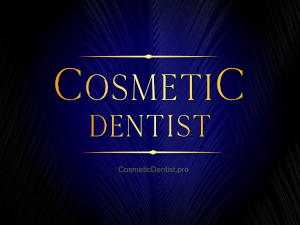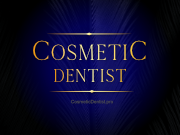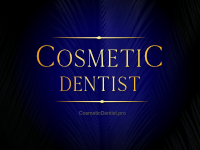Tooth Whitening
Tooth whitening is a bleaching procedure that can be used to lighten the shade and colour of tooth enamel (the outer structure of the tooth).
The treatment can be used to remove/ reduce external enamel staining and also lighten deeper stains/ colour within the enamel structure to achieve an overall whiter appearance.
What causes teeth to be a darker colour?
The shade of teeth may be darkened or uneven for a variety of reasons but they fall into two key categories. Intrinsic (internal structure) staining and extrinsic (external structure) staining;
Intrinsic (internal structure) Staining/ Discolouration
The staining/ discolouration is quite deep within the tooth structure and hence cannot be treated with standard tooth whitening procedures. Intrinsic Staining means the staining is within the tooth, potentially deep within the tooth enamel but often within the dentine that sits behind the enamel. This can occur for several reasons;
- Tooth Decay – often has associated staining due to the breakdown products.
- Pulp breakdown – if a tooth dies the contents including nerves and blood vessels can break down and release coloured pigments (much like those seen in a bruise). These can stain the inside of a tooth and cause discolouration.
- Fillings can cause staining as pigments are absorbed into the tooth dentine (amalgam/ metal fillings often cause the tooth they sit in to go a grey / blue colour). If fillings leak, staining can also occur around the margins (junctions where the filling and natural tooth material join together.
- Restorations (including crowns, veneers etc…) can have associated staining if the margins where the adhesive sits leaks and allow staining into the junction.
- Childhood medication – Tetracycline (amongst other medications) taken during childhood can lead to discolouration of the tooth enamel, which can appear with a stripy blue, grey, brown colouration.
- Some medical conditions can predispose to staining and / or atypical structure tooth enamel and dentine formation. They cause problems due to issues with connective tissues which affect the formation of tooth structures and/ or by affecting the body whilst the teeth are formed in the child’s jaws.
Treatment of Intrinsic Staining/ Discolouration;
There are a number of treatment options available, which include;
- Veneers are made from either porcelain or composite material and can be used to mask/ cover the colouration. They are often used in trauma cases, especially as the damaged tooth may also need physically repairing.
- Internal Tooth Bleaching – a treatment that involves the opening up of the back of a tooth and then using bleaching ingredients to gradually whiten the internal staining of the tooth.
Extrinsic (external structure) Staining/ Discolouration
This staining/ discolouration is far more superficial and is therefore more suitable for standard tooth whitening procedures.
Treatment of Extrinsic (external structure) Staining/ Discolouration;
- Regular Hygienist Care – Some people may find that simply removing staining that has built over time (due to staining drinks, foods and tobacco) may provide a considerably whiter fresher appearance.
- Whitening toothpastes – Some whitening toothpaste contain polishing agents that can help to maintain a whiter teeth appearance (toothpastes do not and therefore cannot actually whiten teeth, they simply remove the stain, which may give a whiter appearance. This treatment should be combined with regular hygienist’s visits to remove more stubborn stains and obviously look after oral health. Please Note: Smokers toothpastes may offer short term benefits however care must be taken as regular use can lead to roughening of the tooth enamel surface and hence a higher chance of staining.
- Tooth Whitening Systems – These are all based on the principles of an external bleaching process that uses a peroxide-based bleaching gel of varying strength (3%-30% peroxide). The higher the concentration of peroxide in the gel, the more powerful and theoretically quicker it is. While a higher concentration gel is more effective at whitening the teeth, it also has greater potential to cause side effects such as sensitivity and damage to the surrounding gum tissue and your lips.
- “Off-the-shelf” home whitening systems – these systems are relatively cheap but you tend to get what you pay for. The most important aspect of tooth whitening success with a tray system is the seal around the neck of the teeth. Poorly made or “off-the-shelf” systems have trays which do not tend to fit very well and therefore lose bleaching gel into the mouth. Whilst it is not ideal to have this leaking into the mouth; saliva also leaks under the tray and will dilute the gel and hence mean that whilst the teeth tips may lighten in shade the parts of the teeth closer to the gum will not change much (this makes a huge difference to the overall effect).
- In Home – Professional home whitening systems – involve the taking of impressions (moulds) of your teeth using a special dental putty. A dental technician will then use this to cast a model of your teeth from plaster and make your custom teeth whitening trays from this. Once these trays have been made (usually takes 5-10 days) you can use them in combination with professional whitening gel (provided by the dentist) until you are happy with the results. Depending on the teeth whitening system, some trays need to be worn overnight while others for only 1-2 hours a day.
- In Surgery – Laser / in-surgery teeth whitening systems – involve the use of in-surgery whitening gel in combination with special blue activation light. Although this system requires the patient lies in the dental chair for 1 – 1.5 hours, the treatment is then complete.
- Combination Whitening Treatment – it is generally regarded that a combination of in-surgery whitening combined with professional at-home whitening tray system, provides the best result and also allows the patient to continue to whiten the teeth / top-up the results by continued use of the whitening trays and gel refill at home.
Please Note: Due to the health risks and potential for medical damage if done incorrectly, recent legislation makes it completely illegal for anyone other than a qualified, registered (and insured) dental professional to carry out tooth whitening proceedures.
Who is Suitability for tooth whitening?
Some people are not suitable for teeth whitening so you will need to be assessed for your suitability during a consultation. If you have gum disease or other dental health problems, you may not be suitable. The teeth whitening process does not change the colour of crowns, veneers or fillings so it is important to understand that you may need to change these to match the colour of your whitened teeth.
How much whiter will my teeth look?
This varies from individual to individual, and also depends on the type of whitening system used. Some people respond very well to teeth whitening and have dramatically whiter teeth as a result, whereas others may notice very little difference at all. People with heavily stained yellow teeth tend to have more dramatic results than those with slightly discoloured teeth.
Does it hurt? What are the side effects of teeth whitening?
Whilst some people experience no pain or discomfort, the majority of people will experience some kind of sensitivity either during and/or after the initial treatment. This is usually described by patients as sporadic, sharp shooting pains coming from their teeth. This should settle down after approximately 48 hours though. The use of a special gel or mousse to apply to your teeth may help with the sensitivity. It is advisable to avoid hot or cold food and drinks within the first 48 hours of your whitening treatment.


